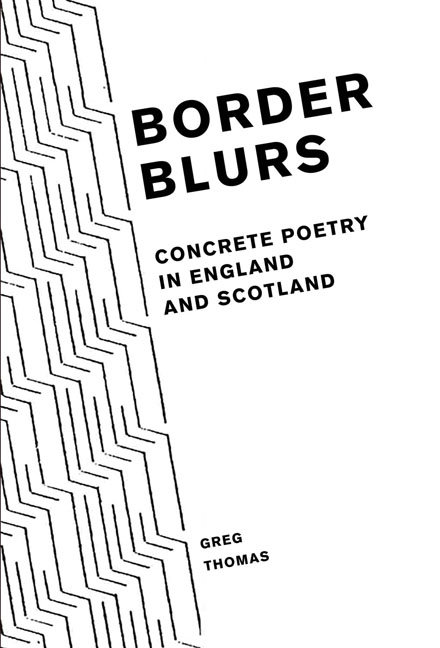Book contents
- Frontmatter
- Contents
- Dedication
- Figures
- Notes on Referencing
- Acknowledgements
- 1 Introduction
- 2 Concrete Poetry/Konkrete Poesie/Poesia Concreta: The International Scene
- 3 Order and Doubt: Ian Hamilton Finlay
- 4 Off-Concrete: Edwin Morgan
- 5 Apophasis: Dom Sylvester Houédard
- 6 Abstract Concrete: Bob Cobbing
- 7 ?Concrete Poetry and After: Conclusion
- Works Cited
- Index
6 - Abstract Concrete: Bob Cobbing
- Frontmatter
- Contents
- Dedication
- Figures
- Notes on Referencing
- Acknowledgements
- 1 Introduction
- 2 Concrete Poetry/Konkrete Poesie/Poesia Concreta: The International Scene
- 3 Order and Doubt: Ian Hamilton Finlay
- 4 Off-Concrete: Edwin Morgan
- 5 Apophasis: Dom Sylvester Houédard
- 6 Abstract Concrete: Bob Cobbing
- 7 ?Concrete Poetry and After: Conclusion
- Works Cited
- Index
Summary
During the autumn of 1964, apparently while channelling the psychoactive effects of a bout of flu, Bob Cobbing completed his alphabetic poem sequence Sound Poems (1965a), published the following spring through his press Writers Forum. Sound Poems is the first of Cobbing’s publications to make extensive use of what can be called ‘concrete’ techniques; yet, at the time of its composition, according to Cobbing himself, he was unaware of concrete poetry as a pre-existing style, only becoming so in the process of circulating the collection to other writers, artists, and publishers. As this delayed point of contact might imply, the concrete poetics that Cobbing cultivated over the next few years is the most resistant, of the practices considered in detail in this text, to analysis by recourse to the earliest conceptions of the style. This is not to cast an aspersion on Cobbing's work, simply to draw an obvious qualitative distinction based partly on his own statements on concrete poetry, which present an integrally altered sense of the term with expanded stylistic and historical boundaries incorporating everything from medieval pattern poetry to the French ‘poésie sonore’ that had influenced Sound Poems.
In fact, the extensive influence of sound poetry – besides a whole range of other artistic and literary genres – on Cobbing's work makes the presentation of that work solely as ‘concrete poetry’ somewhat difficult. It is also worth acknowledging that I am applying the term exclusively to Cobbing's sound-based and visual work of the 1960s–1970s, not to his practice as a whole, nor to the more semantically oriented, found and cut-up poetry that he continued to compose across that shorter time-frame. Bearing these qualifications in mind, I will provisionally ascribe two key characteristics to Cobbing's concrete poetry.
Firstly, by emphasising the visual, sonic, and otherwise material elements of language, Cobbing, like Houédard, often radically reduced the role of semantic sense in the concrete poem. For Houédard, this generally meant fashioning letters and diacritical marks into precise architectonic constructions. For Cobbing, more often, it meant breaking down words, letters, and phonemes into their constitutive visual and sonic particles through various forms of spontaneous and improvisatory composition, including performance as composition.
- Type
- Chapter
- Information
- Border BlursConcrete Poetry in England and Scotland, pp. 203 - 248Publisher: Liverpool University PressPrint publication year: 2019



